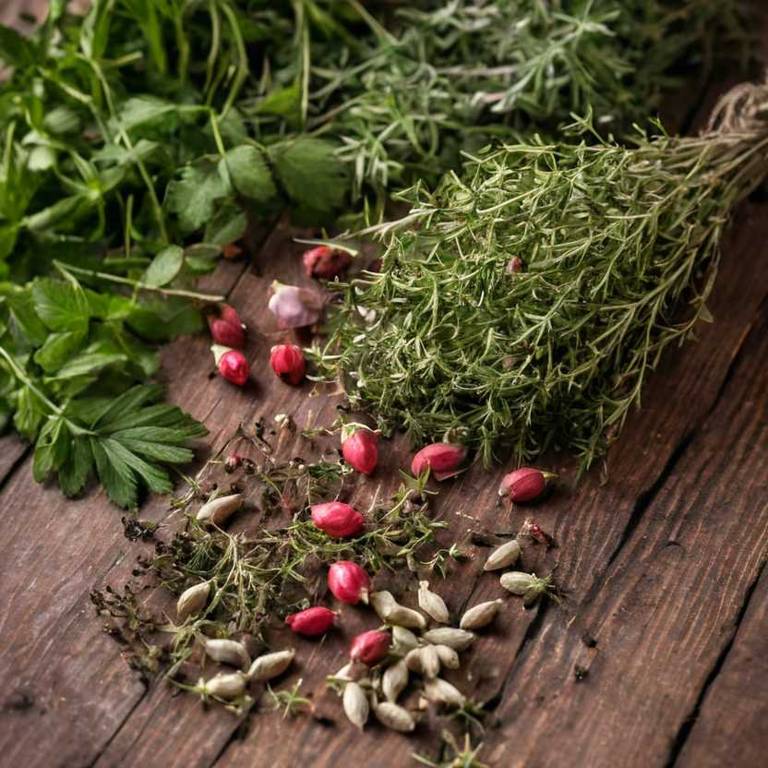By Leen Randell
Updated: Jul 20, 2024
10 Medicinal Constituents Of Rosa Canina (Dog Rose)

Rosa canina has active constituents such as flavonoids, phenolic acids, and vitamin C, which contribute to its medicinal properties.
These constituents are known for their anti-inflammatory and antioxidant effects, making Rosa canina beneficial for skin and cardiovascular health.
The vitamin C content also enhances collagen production, reducing the appearance of fine lines and wrinkles, thus improving skin texture and appearance, improving people's quality of life.
This article explains in details the 10 best active constituents of Rosa canina.
1. Flavonoids
Rosa canina flavonoids is a group of bioactive compounds found in its flowers, leaves, and fruits.
These flavonoids have been extensively studied for their antioxidant, anti-inflammatory, and antimicrobial properties.
Rosa canina flavonoids have been shown to possess significant protective effects against various diseases, including cardiovascular disease, cancer, and neurodegenerative disorders.
2. Quercetin
Rosa canina quercetin is a flavonoid compound extracted from the flowers, leaves, and stems of the plant.
Quercetin has been studied for its potential health benefits, including anti-inflammatory and antioxidant properties.
It has been shown to have protective effects against oxidative stress and cell damage, making it a popular ingredient in dietary supplements and skincare products.
3. Kaempferol
Rosa canina kaempferol is a flavonoid compound found in the flowers and fruits of this species.
It is a powerful antioxidant that has been shown to possess various biological activities, including anti-inflammatory, antimicrobial, and anticancer properties.
Kaempferol has also been reported to exhibit potential benefits for cardiovascular health, as well as neuroprotection against oxidative stress.
4. Ellagic acid
Rosa canina ellagic acid is a polyphenolic compound extracted from its hips.
This natural antioxidant has been found to possess anti-inflammatory and antimicrobial properties, making it potentially effective in preventing the growth of cancer cells.
Research suggests that ellagic acid may also inhibit the production of free radicals, contributing to improved overall health and reduced oxidative stress.
5. Gallic acid
Rosa canina gallic acid is a type of phenolic compound found in the plant's leaves and stems.
This bioactive molecule has been extensively studied for its potential health benefits, including antioxidant, anti-inflammatory, and antimicrobial properties.
Gallic acid has been shown to exhibit potent inhibitory effects on various enzymes and has been used in traditional medicine to treat various ailments, such as wound healing, digestive issues, and skin problems.
6. Catechins
Rosa canina catechins is a class of bioactive compounds found in the leaves and stems of this wild rose species.
These polyphenolic compounds have been shown to possess numerous health benefits, including antioxidant, anti-inflammatory, and antimicrobial properties.
Catechins from Rosa canina have been investigated for their potential use in traditional medicine and as natural food additives to enhance nutritional value and protect against disease.
7. Chlorogenic acid
Rosa canina chlorogenic acid is a natural phenolic compound found in its fruit and flowers.
This antioxidant has been studied for its potential health benefits, including anti-inflammatory and antimicrobial properties.
It has also been shown to have anti-cancer and cardio-protective effects due to its ability to scavenge free radicals and reduce oxidative stress.
8. Rutin
Rosa canina rutin is a natural bioflavonoid compound extracted from the fruit and flowers of the plant.
It has been traditionally used in herbal medicine for its various health benefits, including improving blood circulation, reducing inflammation, and protecting against cardiovascular disease.
Rutin has also been studied for its potential anti-aging properties and ability to strengthen capillaries and veins.
9. Salicylic acid
Rosa canina salicylic acid is a natural compound extracted from its flowers and seeds.
This beta-hydroxy acid has been used for centuries in traditional medicine to treat various skin conditions, such as acne, eczema, and psoriasis.
Salicylic acid helps to exfoliate the skin, unclog pores, and reduce inflammation, making it an effective ingredient in skincare products, particularly those aimed at treating acne-prone skin.
10. Anthocyanins
Rosa canina anthocyanins is a type of flavonoid compound found in the flowers and fruits of the plant.
These pigments are responsible for the red, purple, and blue colors of many fruits and vegetables. Rosa canina anthocyanins have been shown to possess antioxidant and anti-inflammatory properties, making them potentially useful in preventing chronic diseases such as cardiovascular disease, cancer, and neurodegenerative disorders.
They also exhibit antimicrobial and antiviral activities.